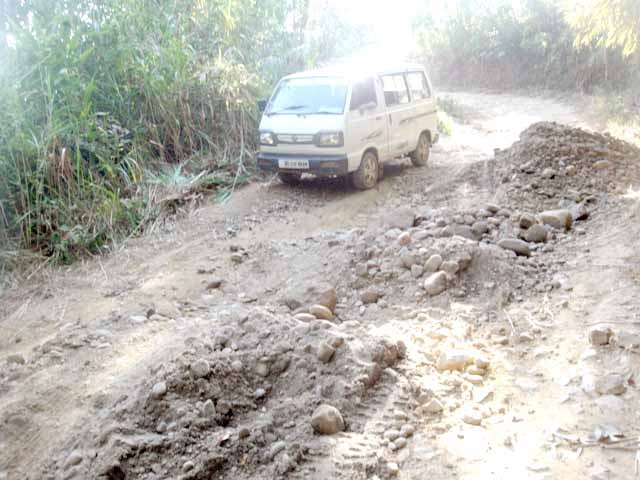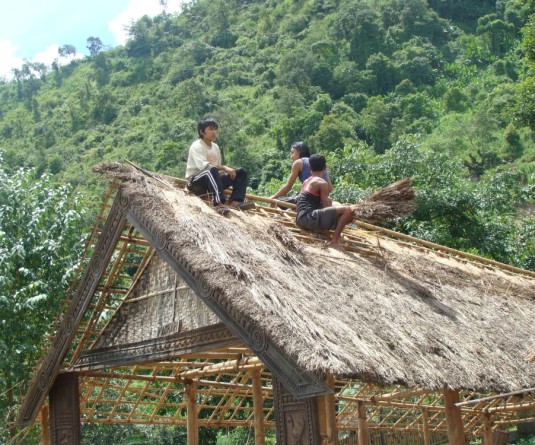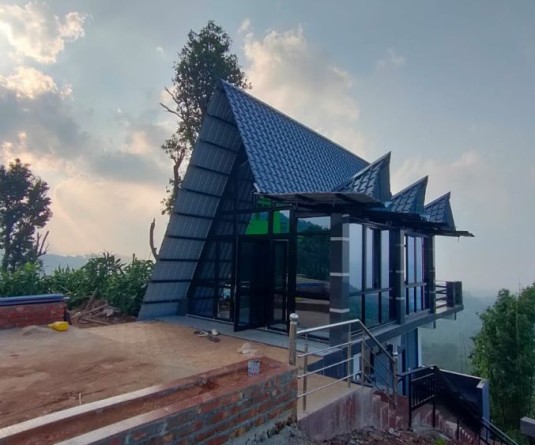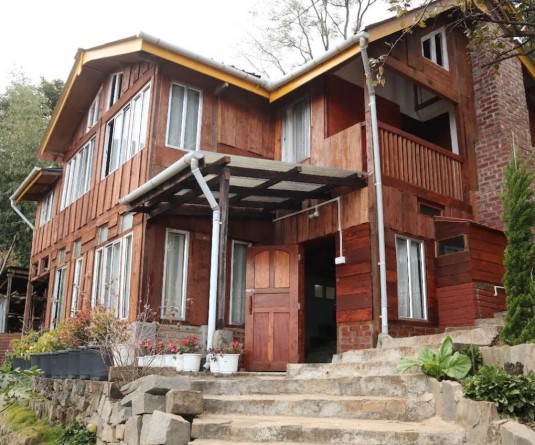A vehicle trying to maneuver a pothole while coming down from Molungkimong village on November 11. (Morung Photo)

Morung Express Feature
Mokokchung | November 24
The road is steep; it goes up, and up. It somehow resembles the winding road leading to the remote Longwa village in Mon district, however, this road leading to Molungkimong village from the main Highway No 61 at Tuli, is terrible, unlike the repaired back-topped road to Longwa.
This village, Molungkimong, located some ninety kilometers away from Mokokchung town, is the place where the first American Missionary to Naga Hills, Dr EW Clark, landed in the early 1870’s and established the first church on December 22, 1872.
The name Molungkimong and its neighboring village, Molungyimsen, are important villages when it comes to the history of Christianity in Naga areas and the spread of the gospel thereof. However, a trip to Molungkimong on the occasion on November 10, 2012 reflects a story of neglect especially when it comes to road conditions. Here is an historical village where the first American missionary first stepped his foot in Naga Hills; here is the village where Christianity first took root, and the first Baptist church was established, and here we were going uphill in a Maruti Van maneuvering on the treacherous potholes on a snail pace.
Molungkimong is located in Changkikong Range in Mokokchung district; it is one among the nine villages under the range. However this village is placed under the Alongtaki Constituency unlike the some of the other villages which is placed under the Jangpetkong Assembly constituency. The village can be reached from either the Changki side or from Tuli town.
However, the road condition from both the approach roads are in pitiable condition, in fact some have termed it as the worst road in the entire Ao area. The road from Changki village area traversing the villages of Chungliyimsen, Khar, Mongchen, Dibuia, Waromung, Yimjenkimong and to Molungkimong is as pathetic as the road from Tuli town. No wonder, taxi drivers and owners were reluctant to take us to the village, and came only till Tuli town.
But, Molungkimong village, like any other village is by all means a beautiful village. Surely, a visitor cannot help but be transported to the days of the forefathers, when Dr EW Clark first stepped into the village with a mission to spread Christianity and educate the Nagas. The Rev Dr EW Clark Monument in the village houses an old ceramic coated iron bathtub used by Clark, the busts of Dr Clark and his wife encased in a glass box and an antique muzzle loading rifle said to be donated by Clark to the villagers. There is a monolith on the spot where the first ‘chapel’ hall was constructed by Dr Clark. The baptism well where the fifteen converts were baptized by Clark is preserved and remodeled with white marble tiles and the names of the converts engraved on the wall overhead. Molungkimong and its neighboring village Molungyimsen (which is located 3 kilometers away from Molungkimong) are popular villages for believers who want to know more about the history of the advent and spread of Christianity in the Naga Hills. But the approach road leading to the village surely must be giving the visitors a tough time on the road.
There were some tipper trucks filling up the massive potholes on the narrow roads with stones and pebbles hauled from a river and the sarcastic comments from the fellow passengers were simply, ‘they are repairing the road because election is coming.’ The return trip was a bumpy like before.
Our friendly driver disclosed that some patches of the road have never been black-topped, only some ceiling of stones were laid in the past and left like that. He disclosed that he has to spend a huge amount of money on maintaining the condition of Maruti van which drives. Perhaps, the pathetic condition of the road might reflect the tiresome journey which Dr Clark undertook in the early 1870’s to reach Molungkimong to spread the gospel of Christianity, but then this is the twenty first century, and perhaps it is time the government do something to improve the condition of the road, so that devoted pilgrims and visitors, both local and foreign, can enjoy the trip to the village and back.






